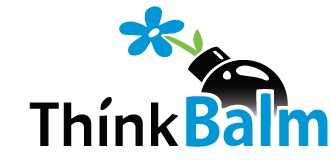- in Blog Articles by Erica Driver
When is Second Life Enterprise beta right for you?
[Edited Monday, November 9th, 2009 for content — correction and clarification of pricing model and definition of Web-based solutions]
On November 4th, Linden Lab announced that its behind-the-firewall immersive platform, Second Life Enterprise, is now in open beta. Think of SL Enterprise (formerly code-named “Nebraska”) as a micro-Second Life — except it runs on a hardware appliance that resides inside your organization’s data center, is integrated with your enterprise directory, and has been designed to be used for work. The beta version features a Web-based administration interface, professional-looking avatars, various meeting and collaboration spaces, and a couple of basic collaboration tools. Linden Lab also announced that in the first half of 2010 a Second Life Work Marketplace will become available, where customers can buy third-party tools, applications, and content to use with SL Enterprise. Fourteen organizations are currently participating in the SL Enterprise beta program including IBM, Northrop Grumman, Naval Undersea Warfare Center, and Case Western Reserve University.
ThinkBalm recommendations
We’re chin-deep in market analysis and vendor recommendations for client projects and a report we’re working on due out later in the year, tentatively titled, “The Enterprise Immersive Technology Decision-Making Guide.” In light of the fact that prospective SL Enterprise customers have nearly two dozen alternatives they could choose from (see a partial list here), here are some recommendations to put the SL Enterprise announcement in context:
Q: When should SL Enterprise be on my product short list?
A: The more of the following are true, the more likely it is that we’d recommend SL Enterprise to be on your shortlist. Your organization requires:
- The ability to create and modify, at reasonable cost, custom immersive experiences like learning simulations, team-building scenarios, games, data visualization, and process design
- The ability to create from scratch, and possibly animate, virtual replicas of your organization’s buildings, products, or other assets for acculturation, training, or prototyping purposes — without a seven-figure budget and legions of consultants
- A solution that enables you to leverage existing Second Life building and scripting skills, and existing Second Life digital assets your organization already owns
- The ability to hold company events during which 300-400 avatars can be in the same virtual space at the same time (such as for a keynote address)
- Built-in, spatialized voice over IP
- Built-in social networking (the ability to “friend” people, peruse users’ profiles, create groups, etc.)
- Privacy for all content, data, and communication taking place in the immersive environment
- Integration with the enterprise directory for access control and identity management
- Access to a wide range of third-party content, tools, and applications (eventually, as the Second Life Work Marketplace launches and gains momentum).
And you have $55,000 to spend one time front on the appliance and software license for 100 avatars, on the license fee every year, just to keep the appliance up and running, plus an annual recurring fee based on the number of users licensed (starting at $175/user with discounts based on volume), plus a per-user cost once you have more than 100 named users, plus any third-party applications or content and third-party custom development costs.
Q: In what circumstances might an alternative product be more suitable?
A: The more of the following are true, the higher the chances that an alternative offering might be a better fit. Your organization requires:
- The ability to reuse a portfolio of existing 3D assets, like computer-aided design (CAD) models, in the immersive environment
- Direct access from the immersive environment to the diverse community that exists in public virtual worlds
- A very low-cost solution
- A solution that does not depend on IT involvement
- A full-fledged set of business applications for meetings, learning and training, and other use cases, right out of the box
- Easy-to-use, fully-functional document-oriented collaboration tools (e.g., drag-and-drop sharing, collaborative editing, and integration with enterprise document repositories)
- A Web-based solution A solution that runs in a Web browser
- Hyper-realistic graphics
- A product that has been generally available for a couple of years.
